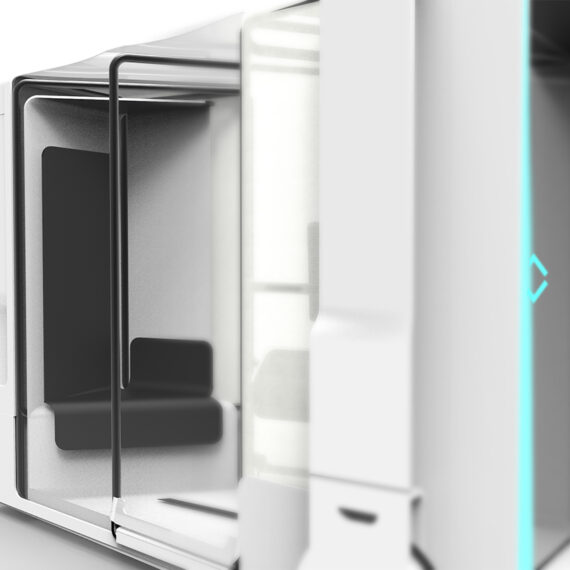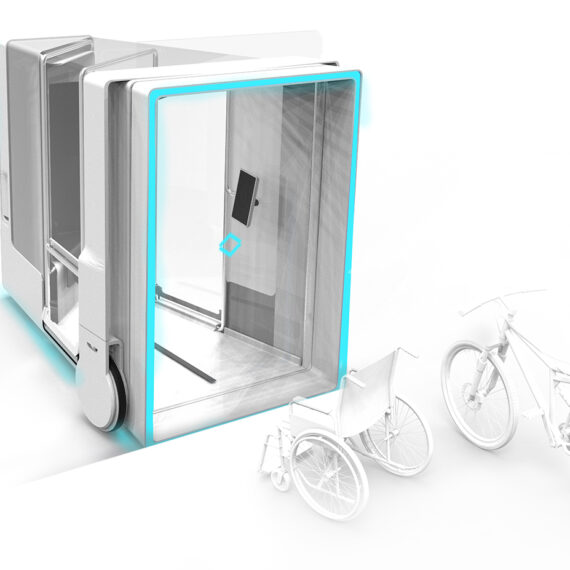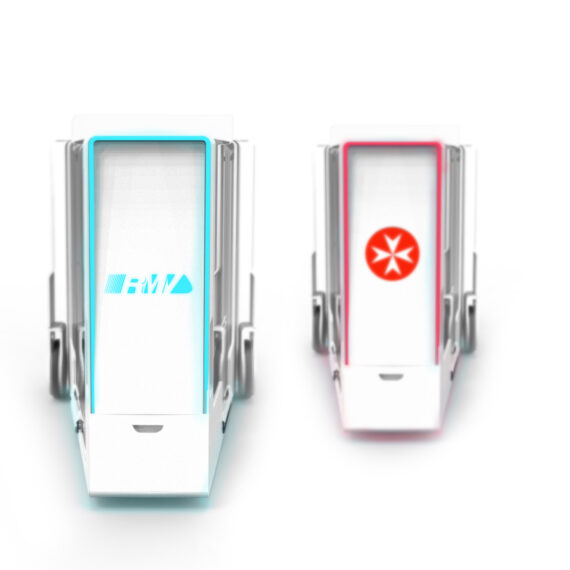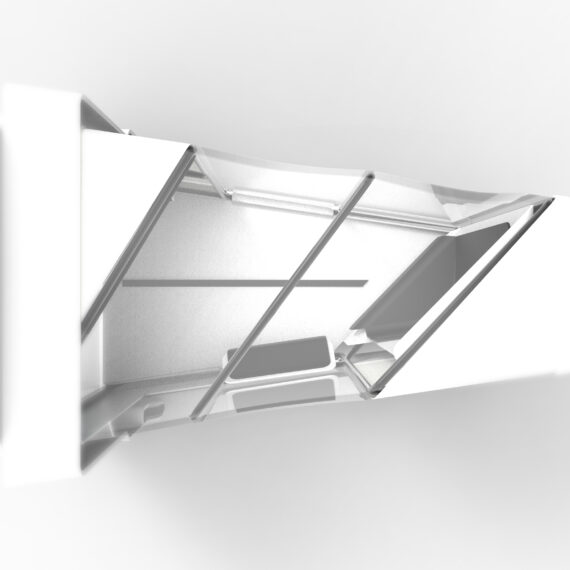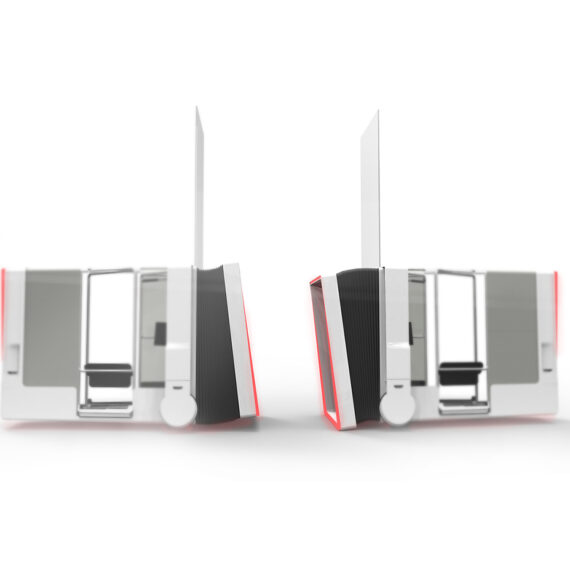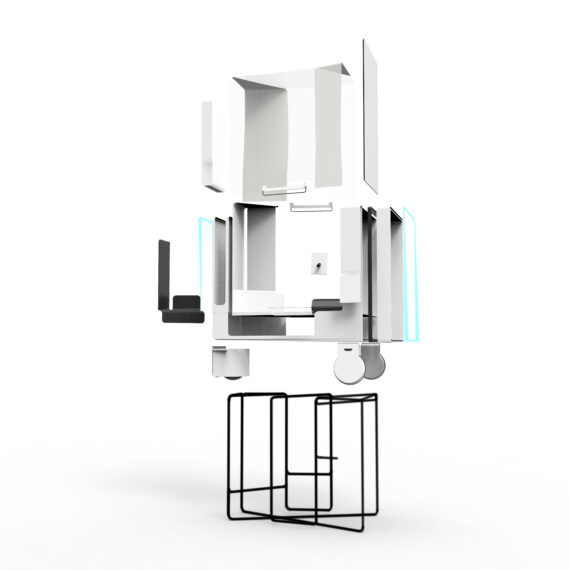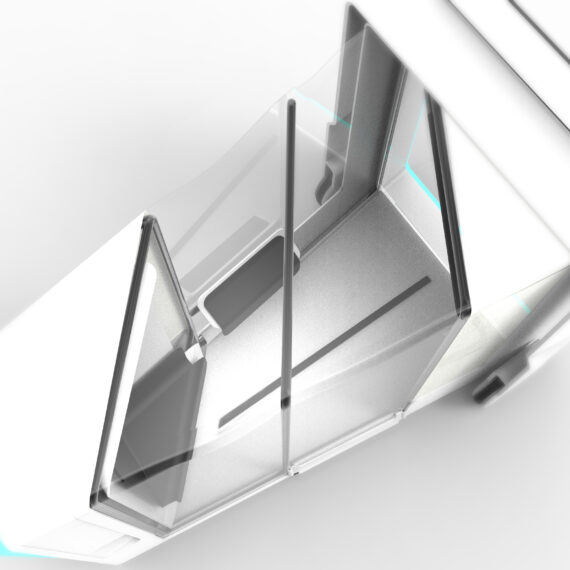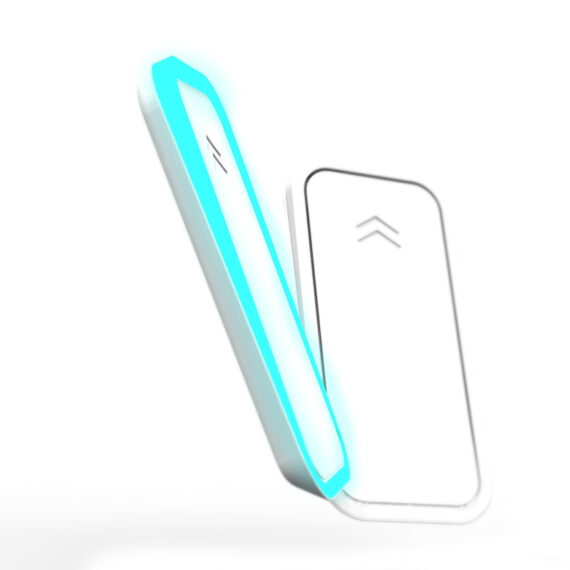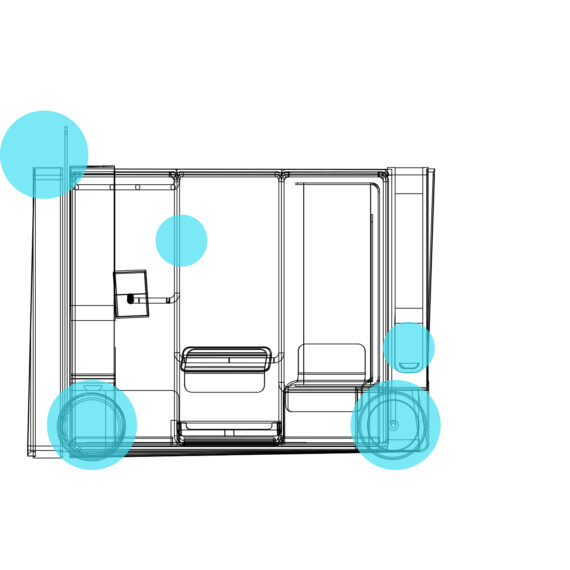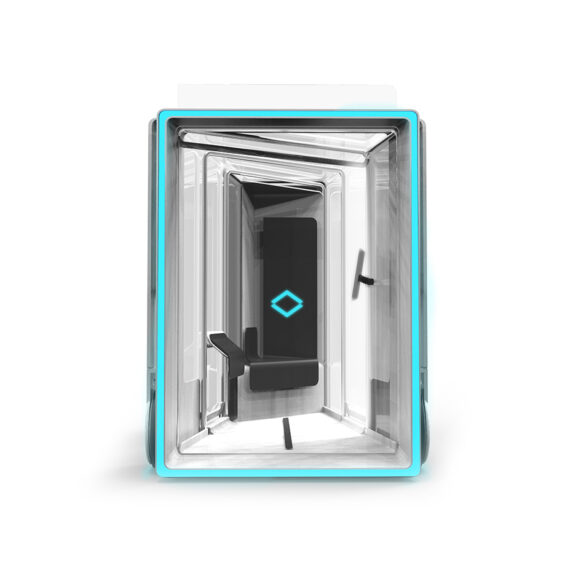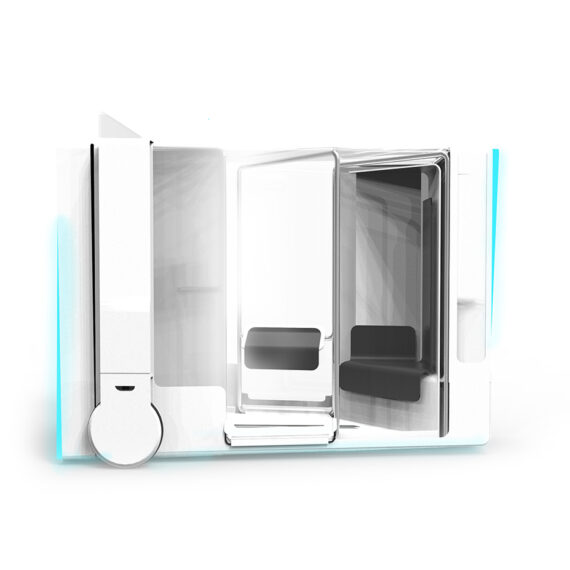Being picked up with
a welcoming and inclusive
Offer to enter
Being able to order service to the place of pick up, doesn’t necessarily mean that it enables the use.
Accessing the vehicle can be difficult for people in a wheelchair, having a bike or a baby cart, or simply being compromised in their ability to move.
1.on.3.4.all picks the users up, by turning through 360* rotatable wheel in the back with its portal front to the passenger walk. There the portal, similar to the gates of an airport is getting lowered or raised to allow entering on an even surface. The glowing soft frame of the portal gets firstly pressed to the passenger walk and secondly communicates with us, through a color code, to enter wait and so on.


